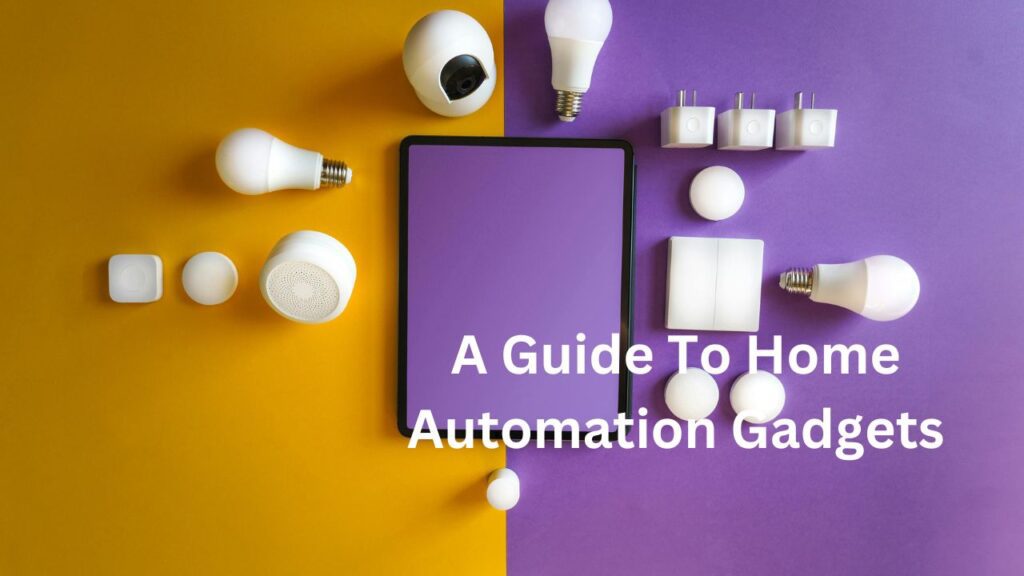A Guide To Home Automation System
This guide unlocks the secrets of home automation systems! Learn how these systems connect your smart devices for a smoother, more efficient home. Discover what makes them tick, from hardware to software. Explore the benefits of control, convenience, and even security. Ready to transform your living space? This guide is your roadmap!
Smart Homes have revolutionized our living spaces, making them more interactive and responsive to our needs. Home Automation not only simplifies the management of electrical appliances in our homes but also provides a personalized living experience tailored to our daily routines.
This concept encompasses a wide range of functions, such as controlling lighting, enhancing home security, opening garage doors with ease, and even ensuring instant access to coffee whenever needed.
The beauty of Home Automation lies in its ability to put complete control of the house at our fingertips, with sensors capable of making decisions based on natural events and the surrounding environment.
For example, if it rains heavily in your city, the water sprinklers in your garden will detect soil moisture levels and avoid unnecessary watering.
Similarly, smart lights in your home can adjust brightness based on natural light availability. Let’s delve deeper into the various devices that can be integrated into a Home Automation system.
Types of Home Automation Controllers
The hub, also known as the controller, is the central component of a Home Automation system. It serves as the connection point for all the sensors in the system, communicating with them through wireless protocols like ZigBee, Wi-Fi, and Z-Wave.
When a user gives an input command, the controller registers it and then sends the command to the appropriate sensor to carry out the desired action. Essentially, the Home Automation Controller/Hub acts as a mediator between the user and the sensor units, keeping all the sensors connected within a network.
Most controllers on the market today use the ZigBee HA 1.2 protocol, which is widely used in Home Automation. The controller creates a wireless ZigBee network within a specific range, allowing all sensors within that range to work together with the controller.
Similarly, Z-Wave and Wi-Fi controllers establish their own networks and manage the sensors within those networks.
To ensure compatibility with different types of Home Automation devices using various protocols, many companies prefer controllers that support all these protocols. Additionally, to enable remote operation, controllers often connect to cloud networks. This allows users to control their Home Automation system from a distance by sending commands to the controller over the cloud network, triggering actions at the desired location.
Types of Lighting Devices in Home Automation
There are many smart lighting options available in the market for Home Automation systems. Smart Lighting can be achieved through In-wall Modules, Smart Bulbs, smart switches, or smart plugs.
- In-Wall Modules or Smart Bulbs: In-wall modules and smart bulbs have sensors built-in that allow users to control the lights through a smartphone app or remote. For example, RGBW LIFX bulbs have Wi-Fi modules that connect to your home network and respond to commands for brightness and color control.
Similarly, RGBW LED strips can be set up with sensor units like Ballast, which communicate with a central control unit to give users the ability to adjust the strip lights.
- Smart Switches: Nowadays, there are different types of smart switches available in the market that mainly operate on Z-Wave and ZigBee protocols. Smart switches are handy if you want to control your home lighting remotely without changing your existing lights or bulbs. These smart switches replace traditional switches and can be controlled using the respective apps provided by the switch companies or remotes.
- Smart Plugs: Smart plugs are typically used for side table lamps and similar applications. They contain a ZigBee-operated relay module that, based on commands from a smartphone, either allows or cuts off the electrical supply. In addition to lighting, smart plugs can be used for geyser switches and any electrical plug where you want to remotely turn on or off your device.
Smart Security Sensors/Devices for Home Automation
Smart security is crucial in Home Automation, with a variety of sensors and devices covering every aspect of your smart home. Let’s explore some commonly used devices/sensors in smart security.
- Motion Sensor: Motion sensors are essential for detecting intrusions when you’re away from home. Once activated, they can notify you through SMS, calls, or other notifications when they detect any movement. Additionally, motion sensors can also be used to automatically turn on pathway lights when you arrive home in the evening.
- Door/Window Sensor: These sensors are typically installed on door and window frames. They consist of two parts – one magnetic and one electric. When one part is placed on the frame and the other on the door/window, they can alert users to any intruders breaking in.
- Door/window sensors can also be used to turn on your living room lights when you open the main door after a long day at work. In addition to lighting control, the main door sensor can be programmed to perform various other tasks simultaneously.
Also Read: Motorized Blinds For Windows
Smart Wireless Doorbells: Smart doorbells are an essential part of your smart home security system. Nowadays, most smart doorbells on the market come equipped with a built-in camera and motion detection feature.
This means that whenever someone approaches your front door, the smart doorbell will send you alert notifications to your phone. Even if you are far away, you can easily activate the wireless IP camera on the smart doorbell to see who is at your door.
Many smart doorbells available today can be connected to your home Wi-Fi network, allowing you to monitor your home from anywhere. Some smart doorbells also have a two-way audio feature, enabling you to communicate with the person at your door even if you are not home.
This ensures that you never miss important deliveries, even when you are away.
Also Read: The Ultimate Guide To Best Video Door Bell
Smart Door Locks: Smart door locks are equipped with built-in modules that receive wireless ZigBee and Z-Wave commands, allowing users to operate the locks without keys. Users can lock or unlock their doors remotely, giving access to their homes to trusted individuals even when they are not physically present.
Security cameras: Security cameras are essential for home security. The key feature of smart security cameras is the ability to monitor remotely.
These cameras connect to your home internet network via Wi-Fi and can stream live video to users from anywhere. Some smart cameras also come with motion detector sensors that alert users to any movements detected.
Entertainment Devices in Home Automation Systems
- Speakers/Audio Distribution: Home Automation systems not only control lighting and security but also cater to your entertainment needs. Companies like BOSE and SONOS offer HiFi Wireless speakers for distributed audio throughout the home, allowing you to listen to the same audio in all rooms.
- Video Distribution: Similar to distributed audio, Home Automation systems can distribute video as well. This means a single video source, such as a BluRay movie or Satellite TV, can be shared between multiple TVs, reducing the need for multiple satellite TV connections. Home Automation Roller Shutter screens can also be used for distributed video.
- Virtual Personal Assistant: Some entertainment devices in Home Automation are interactive and responsive. For example, you can communicate with Amazon Echo to control tasks like turning on/off lights, locking/unlocking smart locks, playing music, and triggering scenes.
Climate Control Devices for Home Automation
There are different types of climate control sensors available in the market today for Home Automation. These sensors come in the form of temperature and humidity sensors.
They detect the heat and moisture levels in the air and can automatically activate fans or air conditioners when the temperature reaches certain thresholds.

